 Oriental Street Scene
Oriental Street SceneArtist: Gustav Bauernfeind
Title: Oriental Street Scene/Orientalische Strassenszene
Signed:
Medium: Oil on Canvas
Size: 40 1/8 x 27 3/8 in (102.2 x 69.8 cm)
Price:
Location: Private Collection
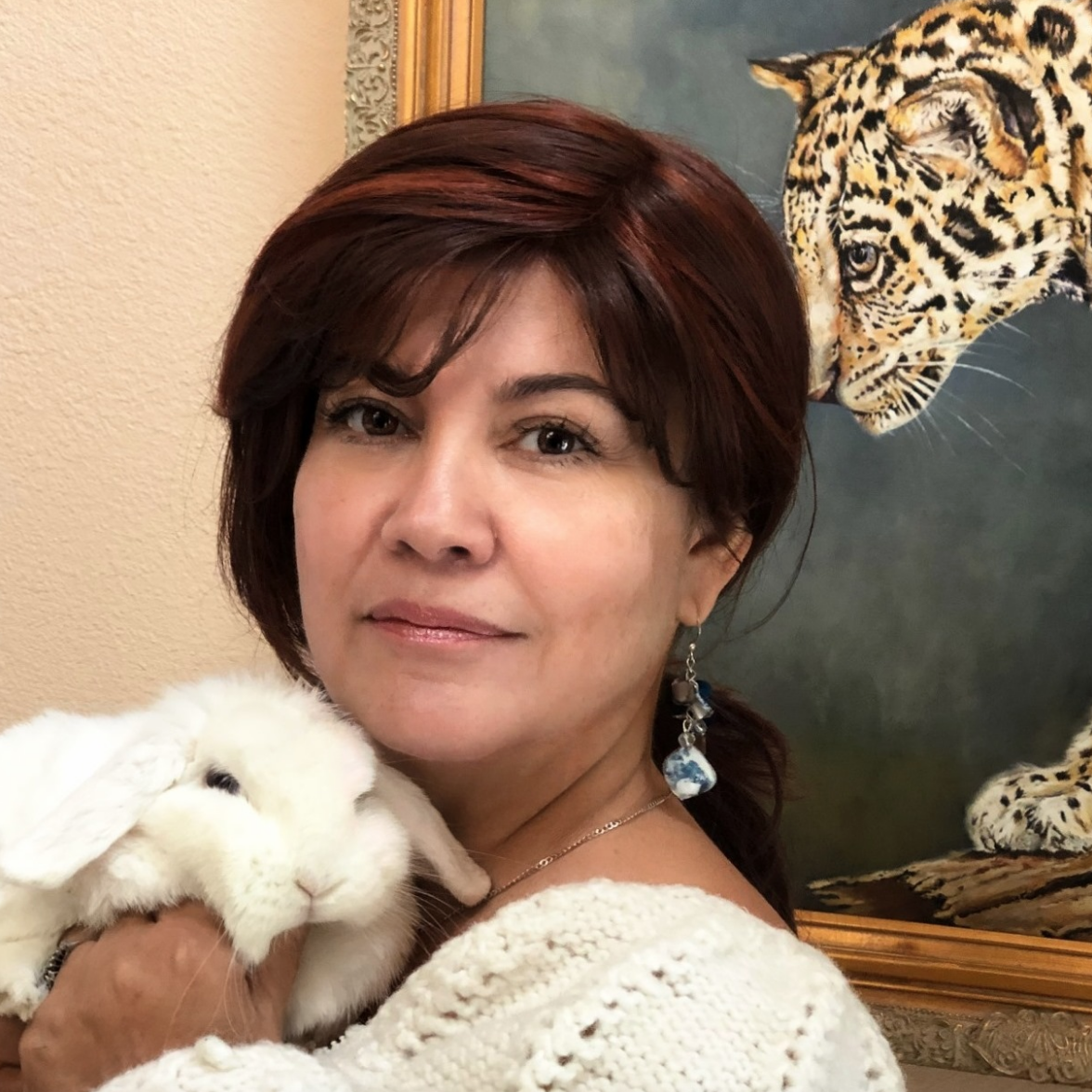
 Special Portrait Offer ~ 30% off regular portrait rates
if under deposit before Nov. 30, 2009!
Special Portrait Offer ~ 30% off regular portrait rates
if under deposit before Nov. 30, 2009!
click below to see inventory
 Oriental Street Scene
Oriental Street Scene View of Jerusalem
View of Jerusalem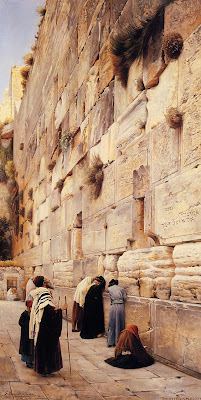 Lament of the Faithful at the Wailing Wall
Lament of the Faithful at the Wailing Wall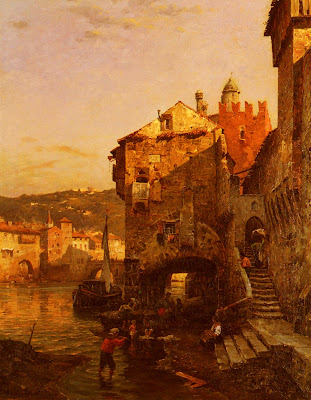 Washing Day
Washing Day  Canal Scene in Chioggia
Canal Scene in Chioggia Market in Jaffa
Market in Jaffa
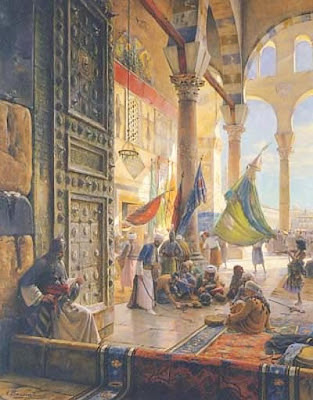 Forecourt of the Ummayad Mosque, Damascus
Forecourt of the Ummayad Mosque, Damascus
Popularly known for its silks and dried fruit, Damascus is in fact one of the world's oldest continuously inhabited cities. As recorded in 15th Century B.C. Egyptian inscriptions, it was the capital of a city-state and hence been conquered by the Assyrians, Alexander the Great, the Seljuks, the Mamelukes, Timurlane, the Ottomans, the Egyptians as well as the British. During the Ottoman rule it was considered to be one of the leading centers of the Empire after Constantinople, Cairo and Jerusalem. Certainly the monumental and commanding architecture of the Ummayad Mosque as well as the 200 smaller mosques sprinkled throughout this ancient city, including one planned by no other than the great architectural genius Sinan himself, only begin to hint at the rich layers of cultural inheritance embedded here. Yet according to Gustav Bauernfeind's well recorded accounts from 1888-89, there were only about 40 Europeans residing in this city of 150,000 occupants, which may explain why Damascus was rarely featured in Orientalist paintings of the day. On November 24th Bauernfeind checked into the Hotel Viktoria and almost immediately began his thorough and systematic sketches of the city. Unlike Karl Baedeker's Palestine and Syria: Handbook for Travellers - a standard guide book published in 1876 - Bauernfeind's diaries are a rare and insightful resource as to the difficulties surrounding a European traveler, particularly in this part of the region. The quality of Bauernfeind's in situ watercolors and study drawings dating back to this period are even more astonishing in light of his daily struggles on the streets and rooftops of Damascus. The Syrian Muslims viewed drawing and painting as an attempt to imitate God's creation and hence considered it a sin. Clearly this only made it more difficult for Bauernfeind to visit, study and draw their everyday lives as well as their sacred temples and mosques. Although detailed travel books were available to European travelers it was common and even advisable to make the acquaintance of other westerners living in the regions one was visiting. Furthermore, both a translator as well as a guide was at the top of a traveler's priority list. Bauernfeind has documented receiving recommendations for notable sights in Damascus from Sister Breuner and Dr. von Dyk in Beirut and from his arrival in Damascus onward, Dragoman Franz (le baron de Damaskus) and a Mr. Koch kept him company most evenings as well as on Sundays. His translator on the other hand accompanied him through the day and mainly arranged for the mosque wardens to receive Baksheesh - usually 6 or 9 piasters a day - which would purchase Bauernfeind an unofficial permit to paint the sites. The only exception was on Fridays - a religious holiday in Islam - when Bauernfeind would often take care of correspondence as well as his accounts instead of painting. His first day, Monday November 25th, was spent sketching the S–k el cotton (Cotton Bazaar) at which time he was surrounded by young and curious crowds who protested his activities. Because of the loud reactions of the public Bauernfeind recorded having to climb up on the rooftops in order to sketch the minaret of the Galciye Mosque in peace. Compositional restrictions of such a bird's eye view required him - as distracting as his audience may have been - to return to the street level and try out a new location by the girls' school. Finally he took a break from the distracting crowds near the bazaar and visited the Ummayad Mosque for the first time on 2 December 1888. In fact the structure left a great impression on Bauernfeind: 'Dann ein sehr dankbares Motiv "Eingangstor in die grosse Moschee" entdeckt. Es wird sehr schwierig sein, dasselbe zu malen. Wenn es moeglich ist, so hoffe ich ein schoenes Bild zustande zu bringen'. (G. Bauernfeind, p. 14)
The beauty of this architectural edifice combined with the outstanding compositional opportunities it presented - particularly involving light and volume - captivated Bauernfeind for the next six months. Encouraged by his architectural background, his tremendous attention to detail and exactitude is apparent when viewing the Forecourt of the Ummayad Mosque, Damascus . As evident in his diaries as well as the preparatory drawings, the amount of comprehensive work that was invested in the production of the present oil is most impressive. The Ummayad Mosque, also known as the Great Mosque, is believed to be the building site of an Armean Temple to the God of Hadad dating back to 3000 B.C.. Built in the 1st Century AD and again renovated under Septimus Severus during 193-211 A.D., the site housed a Roman temple dedicated to Jupiter. Arcadius of the Byzantine Empire restored and converted the Roman temple into a Christian Church naming it the Church of St. John (395-408 A.D.) as it held a casket with the head of the Baptist on display. Following the Arab conquest of the city Welid, son of Abd el-Melik and the sixth Ummayad Khalif, entered negotiations with the Christians residing in the city regarding the purchase of their rights over the location. "The Christians however declined to part with their Church, and it was then taken from them, either without compensation or according to a more probable account, in return for the guaranteed possession of several other churches in and around Damascus, which had not hitherto been expressly secured to them. The Khalif himself is said to have directed the first blow to the altar, as a signal for its destruction, to the great grief of the Christians. He then proceeded, without entirely demolishing the old walls, to erect a magnificent mosque on the site of the church. This building is extravagantly praised by Arabic authors, genii are said to have aided its construction, and 1,200 artists to have been summoned from Constantinople to assist. (...) Antique columns were collected in the towns of Syria and used in the decoration of the mosque. The pavement and the lower walls were covered with the rarest marbles, while the upper parts of the walls and the dome were enriched with mosaics. The prayer niches were inlaid with precious stones and golden vines were entwined over the arches of the niches. The ceiling was of wood inlaid with gold, and from it hung 600 golden lamps. Prodigious sums are said to have been expended on the work. (...) Omar ibn Abd el-Aziz (717-720 A.D.) caused the golden lamps to be replaced by others of less value. In 1609 part of the mosque was burned down and since the conquest of Damascus by Timurlane the building has never been restored to its ancient magnificence." (K. Baedeker, Palestine and Syria: handbook for travelers, Leipsic, 1876, p. 482). In fact, yet another fire was responsible for destroying the decorations of the forecourt of the Ummayad Mosque in 1893 (fig. 1). Indeed, the present work by Bauernfeind of 1890, is one of the very rare painted accounts of this site and a comparison with a contemporary photograph of the forecourt (fig. 2) illustrates that the marble floor panels, the blue and white damask tile panels as well as the ancient mosaics on the side walls have been lost during the fire of 1893. Between 2 December 1888 and 18 May 1889, Bauernfeind sketched the forecourt of the Ummayad Mosque as well as the entrance to the Sinan Pasha Mosque practically every day and as a result, paid both of the mosque's wardens a rather hefty sum for informal permissions. An additional expense was paying the models. All of the figures included in these paintings are based on actual models that Bauernfeind became acquainted with on the streets of Damascus and paid handsomely in order to execute darwings of them. On 11 April 1889, for example, Bauernfeind noted in his diaries meeting a snake charmer who posed for five photographs for an undisclosed price. In the Forecourt of the Ummayad Mosque, Damascus, the snake charmer on the right is based on these photographic records. At the conclusion of these six months of extensive studies at no less than five but no more than ten locations throughout Damascus, Bauernfeind returned to Germany to transfer his watercolors and studies into large oil compositions. Two examples of such smaller studies are figures 3 and 4, which became the basis of two major oil compositions, the present work and figure 5, respectively. In the present work, Bauernfeind chooses to open up the focal point of the composition in order to create a greater sense of depth and procession, thus including the ablutions fountain as seen in the far background (fig. 6). Of equal importance, the artist moves the viewer's standpoint to the right. This is an interesting compositional challenge for Bauernfeind since the only available sketch of the forecourt was the one he executed as seen from the left to the right half of the doorway. Upon closer inspection it is apparent that Bauernfeind, instead of creating a left door panel from imagination based loosely on the sketch of the right door panel, has decidedly used the right door panel with precise accuracy as if it were the left door panel. As with the snake charmer, all of the remaining figures in this painting are based on his studies, sketches and photographs of locals whom he encountered at the bazaars or on the streets and often paid them between 6 and 10 Piasters to pose for him. A particularly notable quality in these figure groupings is Bauernfeind's mastery in depicting lusciously colored textiles filled with bright sunlight and juxtaposing them against metal armor, stone structure and skin tones. From 1888 until 1890 Bauernfeind received an advance totaling 6,500 marks from the British dealer Arthur Sulley for a painting based on the entrance of the Sinan Pasha Mosque. Most of this sum was already spent on the daily expenses explained here, together with his hotel rent. By 1891, annoyed by Bauernfeind's unhurried pace, as well as the outstanding advance, Sulley terminated their commercial agreement. Finally the owed painting - lot 9 and titled Warden of the Mosque - was delivered to Sulley far too late to regain his trust. From this point onward Bauernfeind did not receive any advances for future commissions from his patron and furthermore, he had to pay the freight cost of finished works to England in order to present them to Sulley for possible purchase. Sulley did not purchase the present work, mainly due to the frictions between him and Bauernfeind. Photograph of the Ummayad Mosque after the fire of 1893, Courtesy of the New York Public Library. (fig. 2) Contemporary photograph of the Forecourt of the Ummayad Mosque, Courtesy of the New York Public Library. (fig. 3) Gustav Bauernfeind, Westlicher Eingang zur grossen Moschee, 1889, Munich, Staatliche Graphische Sammlung. (fig. 4) Gustav Bauernfeind, Study for the Forecourt of the Great Mosque, Private Collection. (fig. 5) Gustav Bauernfeind, The Forecourt of the Great Mosque, Private Collection. (fig. 6) Plan of the Ummayad Mosque.
Source: Christies Catalog
 Plain of Jericho
Plain of Jericho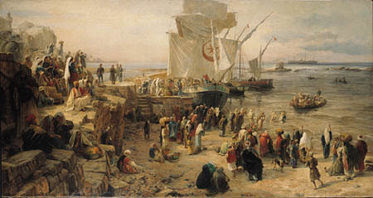 Harbour of Jaffa
Harbour of Jaffa Photo of Gustav
Photo of Gustav Bustling Street Scene Damascus
Bustling Street Scene Damascus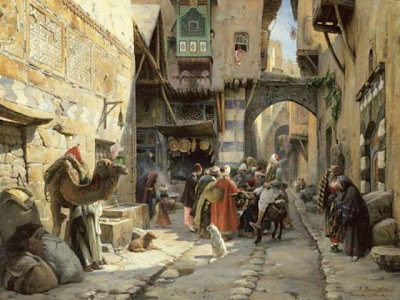 A Street Scene in Damascus
A Street Scene in Damascus